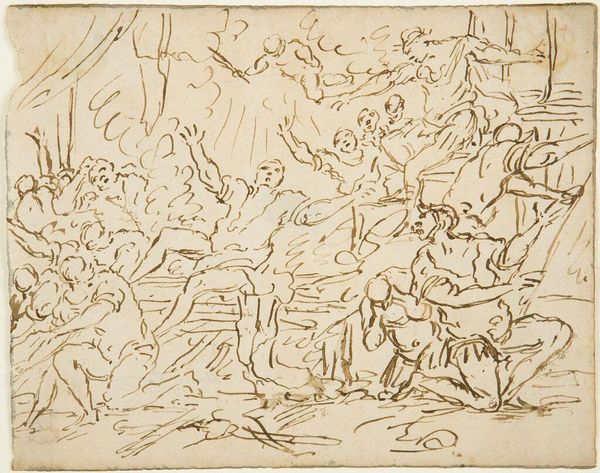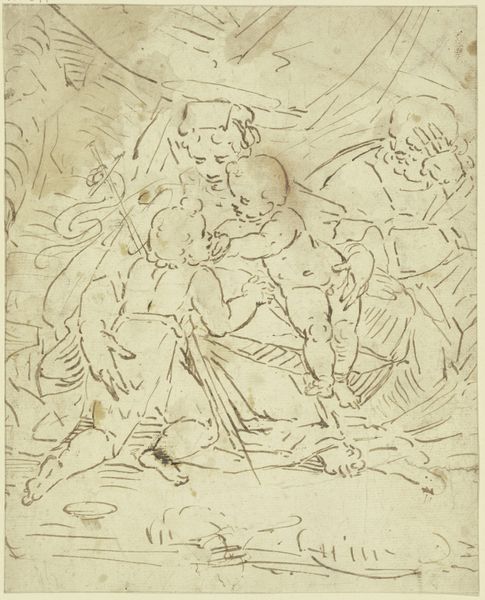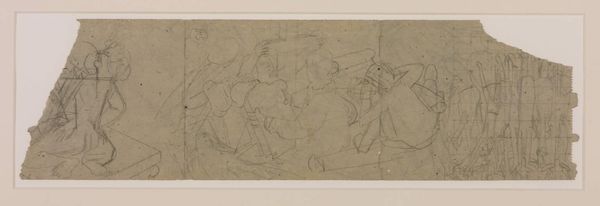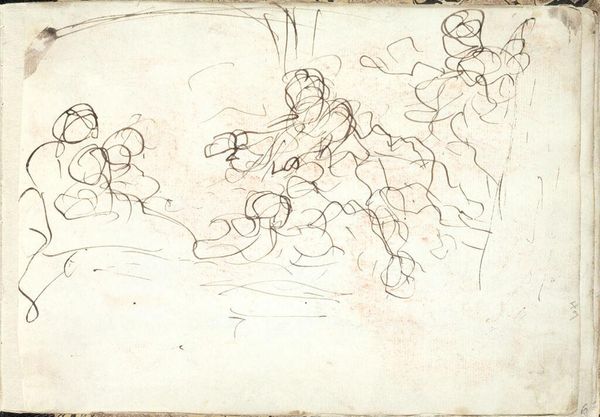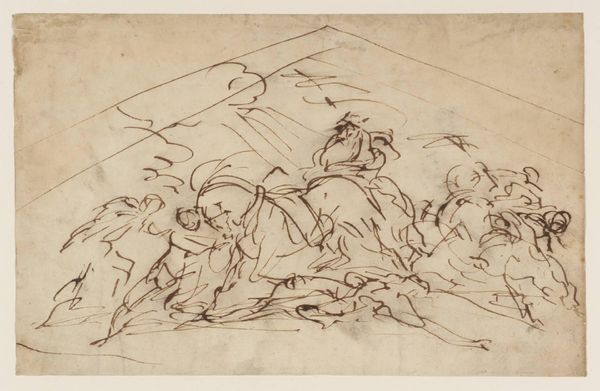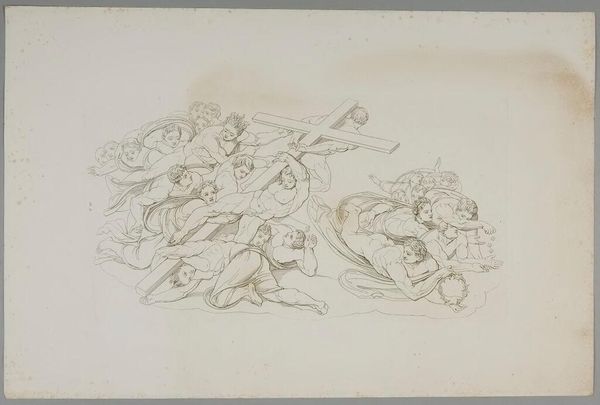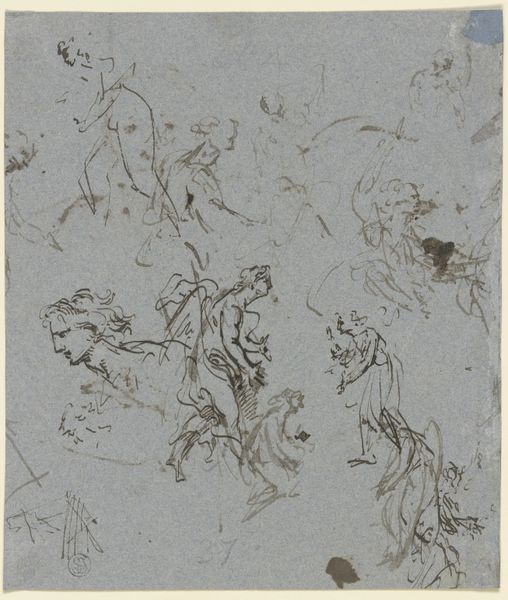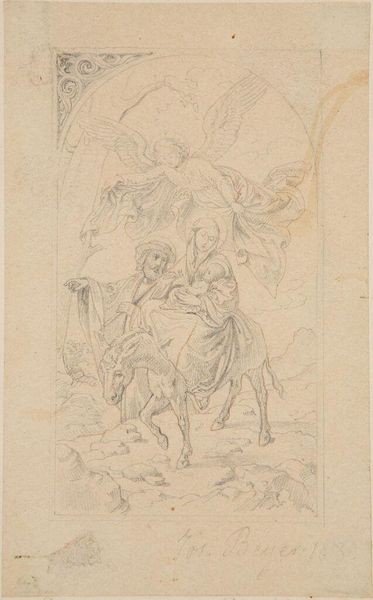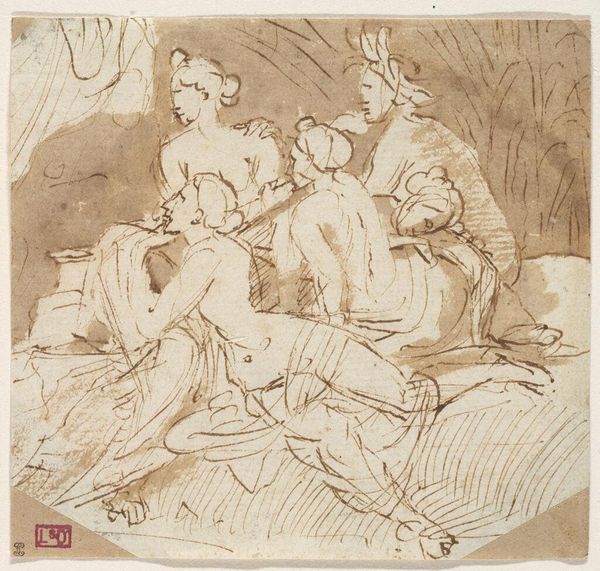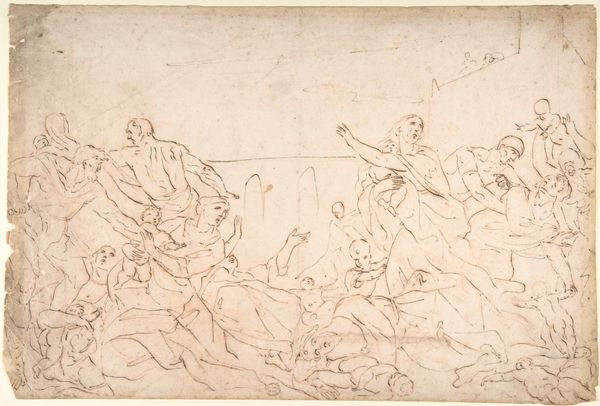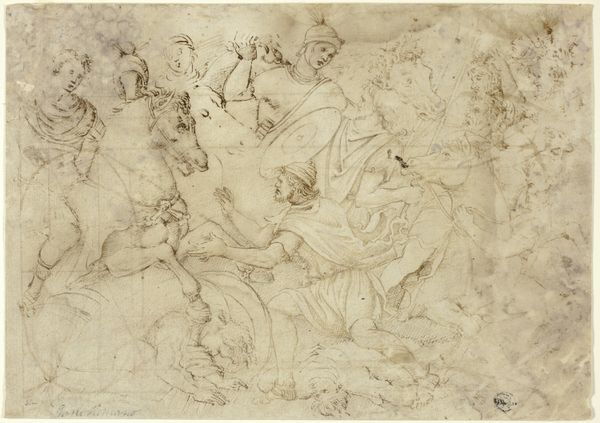
drawing, ink, pen
#
drawing
#
ink drawing
#
pen sketch
#
pencil sketch
#
figuration
#
11_renaissance
#
ink
#
pen
#
history-painting
#
academic-art
Dimensions: height 114 mm, width 225 mm
Copyright: Rijks Museum: Open Domain
Curator: Here we have Lambert Lombard’s drawing, “Apollo, de Muzen en Mercurius,” dating from 1516 to 1566. It's an ink drawing executed with pen. Editor: The figures look unfinished, like ghostly sketches. Yet there's a clear organization despite the sketchiness. It evokes a dreamlike feeling. Curator: Indeed. Lombard was deeply interested in classical antiquity, which explains his rendering of a classical scene with Apollo and the Muses. Think about the labor involved. To create even this sketch involved access to specific, and probably costly materials—pen, ink, and paper itself. Editor: And that explains why this image resonates: Apollo, god of music, poetry, and light; the muses who inspire artists and thinkers; and Mercury, the messenger god known for eloquence and trade. These are potent symbols linked to culture, creativity, and commerce even today. What a great selection of archetypes for such raw artwork materials. Curator: Precisely. Lombard uses line to create form and space, which reflects how classical artistic values were consumed, transformed, and given new expression through available technology, and within very real economic limitations, at that time. Editor: Looking closely, it is curious how instruments like lyres and amphoras reappear, anchoring the figures in a world that, while ancient, sought to define the early modern identity. This artistic reinterpretation provided new social and ideological currency. Curator: What makes it interesting, though, is the accessibility of this drawing. We aren’t confronted with a highly finished painting, or grand sculpture. It's intimate; we see the hand of the artist, and can imagine his own struggles. Editor: In that sense, it strips away some of the mythic distance. And we confront these gods as figures trying on the past, in search of values and meanings for an unknown future. It’s a search that in many ways, continues to our present day. Curator: Absolutely. Thinking about this work in the context of 16th century artistic production makes us appreciate it more today, offering insights on value, culture, labor, and meaning-making across history. Editor: And as we look on those sketchy contours and archetypal characters, one cannot resist but feel a human, emotive echo resounding in them.
Comments
No comments
Be the first to comment and join the conversation on the ultimate creative platform.
